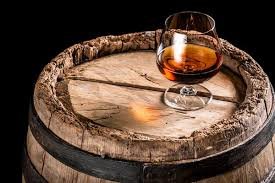Introduction
Rum barrels play a crucial role in shaping the distinct flavors of this beloved spirit. From aging to blending, the choice of barrels can make or break a rum’s profile. In this article, we’ll explore the history, types, and importance of rum barrels in the production process.
The History of Rum Barrels
The practice of aging rum in barrels dates back to the early days of rum production in the Caribbean during the 17th century. Initially, barrels were used for storage and transportation, but over time, distillers discovered that wood imparts unique flavors, enhancing the spirit’s complexity.
Why Are Barrels Important for Aging Rum?
Barrels contribute to a rum’s taste, aroma, and color. Aging allows the spirit to interact with the wood, extracting tannins, vanillin, and other compounds that enrich its character. This process softens harsh alcohol notes, creating a smoother, more refined drink.
Types of Wood Used in Rum Barrels
Different types of wood impart varying flavors to rum:
- American Oak: Commonly used for bourbon, it adds notes of vanilla, caramel, and spice.
- French Oak: Known for its tighter grain, it provides floral and nutty flavors.
- Chestnut & Cherry Wood: Occasionally used for experimental rums, they introduce fruity and sweet nuances.
The Role of Bourbon Barrels in Rum Aging
Most rums are aged in ex-bourbon barrels because bourbon must be aged in new oak barrels, leaving behind a surplus of used barrels. These barrels retain caramelized sugars and charred wood notes, which significantly enhance rum’s depth and sweetness.
Other Types of Barrels Used for Rum Aging
- Sherry Casks: Impart dried fruit and nutty flavors.
- Port Wine Barrels: Add rich, dark fruit notes.
- Cognac Barrels: Introduce floral and oaky complexity.
- Wine Barrels: Contribute fruity and acidic undertones.
The Aging Process and Its Effects on Rum
Aging in barrels leads to evaporation (commonly called the “angel’s share”), which concentrates flavors. Tropical climates accelerate aging due to higher temperatures, allowing rum to mature faster than spirits aged in cooler environments.
Barrel Size and Its Impact on Rum
The size of the barrel affects aging:
- Smaller barrels (e.g., 10-30 gallons): Allow faster aging due to increased wood-to-liquid contact.
- Standard barrels (e.g., 53-gallon bourbon barrels): Provide balanced maturation.
- Large casks (e.g., 500-liter puncheons): Offer slower, more subtle flavor development.
Toasting and Charring Levels in Rum Barrels
Barrels are often toasted or charred to different levels, influencing rum’s final taste:
- Light Char: Subtle wood influence, delicate vanilla.
- Medium Char: Balanced caramel and spice notes.
- Heavy Char: Intense smoky, woody, and deep caramel flavors.
How Rum Finishing Works
Many premium rums undergo additional finishing in unique barrels after primary aging. For example, a rum aged in bourbon barrels may be transferred to a sherry or wine cask for a few months to enhance complexity.
Popular Rum Brands Known for Barrel Aging Techniques
Several distilleries excel in unique barrel-aging processes:
- Appleton Estate: Known for its rich, well-aged Jamaican rums.
- Ron Zacapa: Uses a solera aging system in multiple barrel types.
- Mount Gay: One of the oldest rum producers, emphasizing barrel influence.
- Diplomático: Famous for finishing rum in sherry and port casks.
Using Rum Barrels for Other Spirits
Rum barrels are often repurposed for aging whiskey, beer, and tequila, imparting tropical and sweet rum notes to these beverages.
DIY Rum Barrel Aging at Home
For enthusiasts, small barrels can be purchased to age rum at home, allowing experimentation with wood types and finishing techniques.
Conclusion
Rum barrels are an essential element in rum production, influencing taste, aroma, and texture. Whether it’s a classic ex-bourbon cask or an experimental sherry finish, the barrel aging process elevates rum to an art form. Understanding the role of barrels can deepen appreciation for this timeless spirit.

